
The burnout epidemic is upon us.
For one, countless studies pour in about how American employees are at their emotional edge thanks to the “always-on” work culture and COVID-19.
Two, the WHO has officially recognized burnout—a state of physical or emotional exhaustion following chronic stress—as an occupational health issue.
The result?
US companies lose around $300 billion annually in diminished productivity, absenteeism, and turnover, among other impacts.
So—
At ResumeLab, we’ve decided to poll 1,000 employees, and explore first-hand how pressing the issue of workplace burnout is at the end of 2021, its root causes, and what companies can do to tackle it.
Burnout Is on the Rise

We’ve all heard the old saying:
“Find a job you love, and you will never have to work a day in your life.”
But—
Does passion really let you cut through stress and burnout?
That’s what we wanted to find out first. To do it, we asked Americans if they are passionate about their current job. A full 87% said “Yes.” Yet, 67% of those are experiencing burnout regardless.
Interestingly, younger people (Millennials and Gen Zers) are also much more likely to report they are now going through burnout at work than Baby Boomers (76% vs. 47%). That makes sense. Seasoned employees tend to be more resilient under heavy workloads and stress, new research finds.
So, that somewhat dispels the popular myth that passionate workers are immune to the modern affliction of burnout. After all, if you’re stressed and swamped day in and day out, passion can only take you so far.
Speaking of stress, we also had our survey takers complete a standardized workplace stress test (designed by The Marlin Company and the American Institute of Stress) to get an even more accurate reading of how they feel. It turned out most Americans experience moderate levels of stress at work today. It means some things about their jobs are likely to be quite stressful but manageable at the same time.
Next, we asked employees if they ever experienced burnout in their careers—a whopping 88% answered positively. What’s more, many (40%) encountered signs of burnout twice in their professional lives.
The result?
- Of those who previously dealt with burnout, 69% quit their jobs.
- As many as 50% (of those currently experiencing burnout) and 33% (of those not currently experiencing it) are likely or very likely to leave in the next six months and become part of the mass exodus dubbed “The Great Resignation.”
- Another 33% don’t feel their organizations do enough to alleviate burnout.
So—
Without a doubt, workplace burnout is gaining ground. That’s why employers must understand its root causes before taking steps to alleviate it.
Key Drivers of Burnout

So without beating around the bush, here are the six biggest drivers of burnout in surveyed employees’ organizations:
- Too much work: 57%
- Toxic work culture: 34%
- Constant interruptions: 31%
- Having to work overtime and/or on weekends regularly: 30%
- Unrealistic deadlines and/or expectations from management: 30%
- Lack of communication and/or support from colleagues and/or management: 19%
Somewhat predictably, “too much work” was the most popular choice among employees by a wide margin. And if you think about it, it’s not all that surprising since American work habits are anything but healthy.
For one, the average full-time employee in the US works 47 hours a week—that’s significantly higher than the rates in Western Europe—according to Gallup. Two, we rarely take days off, using only 54% of the allotted time each year. And when we do take a break, 82% of us work on vacation, based on a recent study by MyPerfectResume.
So, employers, take note!
Help your workers strike a good work-life balance, whether it’s by recalibrating their output capacity, encouraging them to go off the grid after hours, or by incentivizing them to use up their PTO.
Physical, Mental, and Behavioral Symptoms of Burnout

At this point, we wanted to examine the symptoms of burnout surveyed employees experienced. We’ve decided to split them into three sections for easier grasp.
Behavioral symptoms:
- Feeling tired and unmotivated: 49%
- Isolating yourself from colleagues and other company employees: 44%
- Procrastinating: 40%
- Withdrawing from responsibilities: 34%
- Skipping work or coming in late and leaving early: 28%
Physical symptoms:
- Feeling tired and drained most of the time: 66%
- Change in appetite or sleep habits: 42%
- Frequent headaches: 41%
- Lowered immunity or frequent illnesses: 10%
Mental symptoms:
- Loss of motivation: 55%
- Decreased satisfaction and sense of accomplishment: 54%
- Detachment: 33%
- Sense of failure and self-doubt: 30%
- Increasingly cynical and negative outlook: 25%
As you can see, burnout takes a considerable toll on staffers. It not only affects their quality of work, but it also has a detrimental impact on employees’ physical and mental wellbeing.
Workplace Burnout: A Sensitive Subject?

At this point, we wanted to ask Americans if they sought support from their employers when going through burnout. It turns out most of them (63%) did, and a full 88% of employees received adequate help.
Interestingly, we’ve noticed that employees with a lot of work experience under the belt (20+ years) are significantly less likely to ask for help when faced with burnout than their younger counterparts (31% vs. 80%).
Now—
Why do Americans prefer to keep the burnout issue to themselves? Here’s what our respondents said:
- I was scared of losing my job: 42%
- I was too embarrassed to admit it: 33%
- I have a poor relationship with my employer: 25%
As clear from the data, a fear of losing a job was the key deterrent. Perhaps, it’s a good time for employers to communicate (and over-communicate, particularly to older workers) that there’s nothing job-axing or shameful about feeling burned out. Instead, it’s critical to come forward if burnout symptoms have appeared on the horizon.
Ways to Beat Burnout

Last, but certainly not least, we wanted to get American employees’ opinions on what organizations can do to combat burnout.
Below are the results:
- Reasonable workload: 49%
- Flexible working arrangements: 44%
- Remote work: 42%
- Fewer working hours: 34%
- More paid time off: 24%
- Access to mental health and wellness programs: 23%
Interestingly, “access to mental health and wellness programs” was the least picked option. While this perk was already common before COVID-19 (81% of large employers offered them), its popularity has skyrocketed starting from the infamous spring of 2020.
That said, most employees don’t find them helpful in dealing with burnout. On top of it, a new Health Affairs study suggests such programs neither make workers healthier nor save companies money.
So—
Employers should focus on offering the commodities employees want the most such as reasonable workload, flexible work schedules, and remote work to tackle burnout effectively.
Stacking It All up
Undoubtedly, burnout is at historic levels.
That’s why businesses should spare no effort in combating this dangerous condition. It’ll not only help them enjoy a much healthier and productive workforce, but they’ll also grow more immune to the Great Resignation phenomenon that’s now wreaking havoc globally.
Now—
Before we wrap up, here’s a quick rundown of the study’s key findings:
- A full 67% of Americans currently experience burnout.
- Another 88% have faced burnout at some point in their careers.
- Of those who dealt with burnout in the past, 69% quit their jobs as a result.
- Nearly 33% of America’s employees don’t feel their organizations do enough to alleviate burnout.
- As many as 50% (of those currently experiencing burnout) and 33% (of those not currently experiencing it) are likely or very likely to leave in the next six months.
Methodology
We surveyed 1,026 unique respondents via a bespoke online polling tool. All respondents included in this study passed an attention-check question. The study was created through several steps of research, crowdsourcing, and surveying.
Limitations
The data we are presenting rely on self-reports from respondents. Each person who took our survey read and responded to each question without any research administration or interference. There are many potential issues with self-reported data like selective memory, telescoping, attribution, or exaggeration.
Some questions and responses have been rephrased or condensed for clarity and ease of understanding for readers. In some cases, the percentages presented may not add up to 100 percent; depending on the case, this is either due to rounding or due to responses of “neither/uncertain/unknown” not being presented.
Fair Use Statement
Don't miss the chance to share these findings–you might regret it! If you think your audience will be interested in this information, you can share it for noncommercial reuse. All we ask in return is that you link back to this page so that your readers can view the full study.
Sources
- Deloitte, “Workplace Burnout Survey”
- Mauno S., Kinnunen U., Ruokolainen M., “Does Aging Make Employees More Resilient to Job Stress? Age as a Moderator in the Job Stressor–Well-Being Relationship in Three Finnish Occupational Samples”
- Reynolds B., “Mental Health America Survey: Mental Health in the Workplace”
- Saad L., “The “40-Hour” Workweek Is Actually Longer -- By Seven Hours”
- Stillman J., “A New Study Suggests Employee Wellness Programs Are Pretty Much Useless”
- Song Z., Baicker K., “Health and Economic Outcomes up to Three Years after a Workplace Wellness Program: A Randomized Controlled Trial”
- The Marlin Company and the American Institute of Stress, “The Workplace Stress Scale”
- The American Institute of Stress, “Workplace Stress”
About Us
Burnout is no joke. That's why our goal at ResumeLab is to help you find a job where you can be happy. We provide useful tips on how to write a perfect resume, what resume format to use, and the selection of the best professional resume templates and cover letter templates. That are only just a few things we provide—browse our website and learn more.
![The Female Boss: How We See Women in Power [2021 Study]](https://cdn-images.resumelab.com/pages/female_boss_rluk_8.jpg)

![United Stress of America [2021 Study]](https://cdn-images.resumelab.com/pages/resumelab_header_1_united_stress_of_america_rlus.jpg)


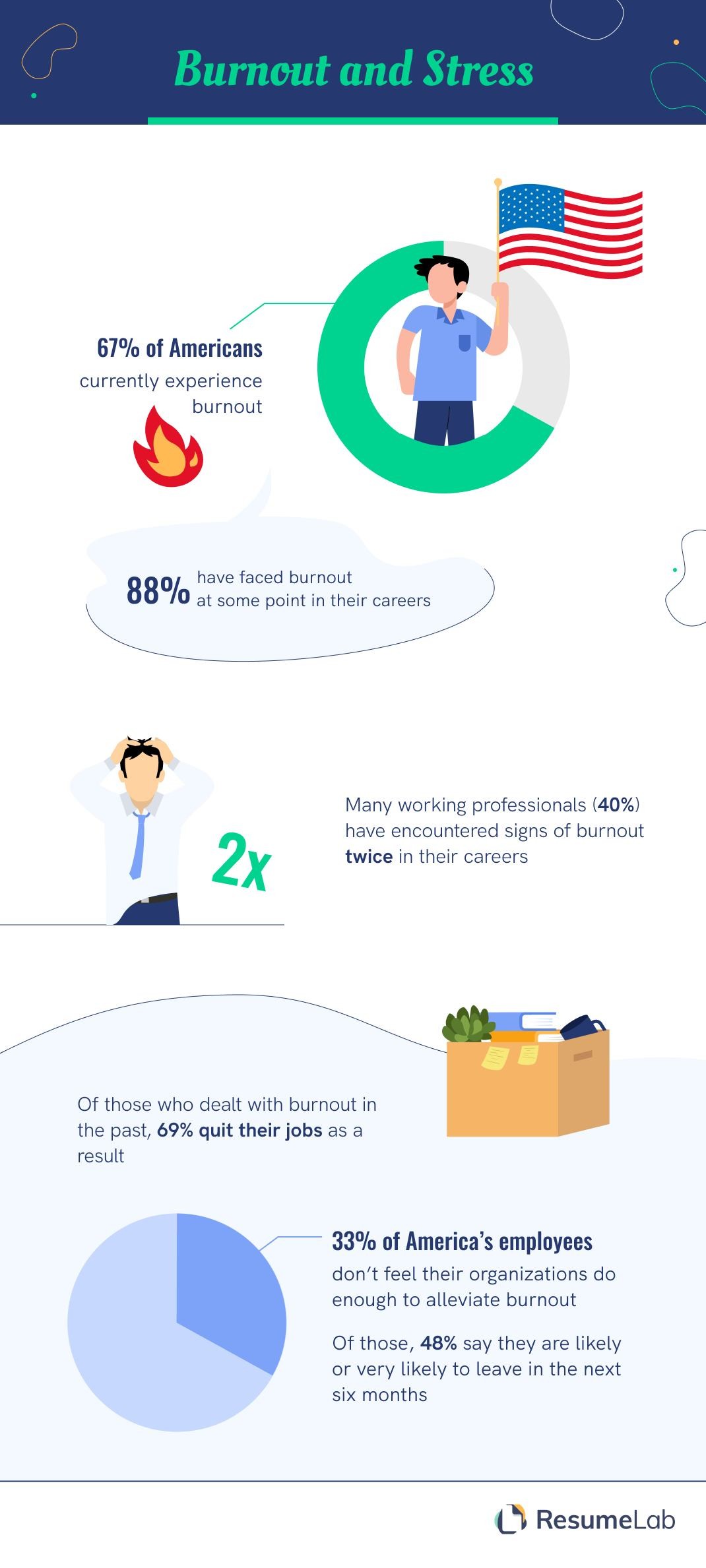
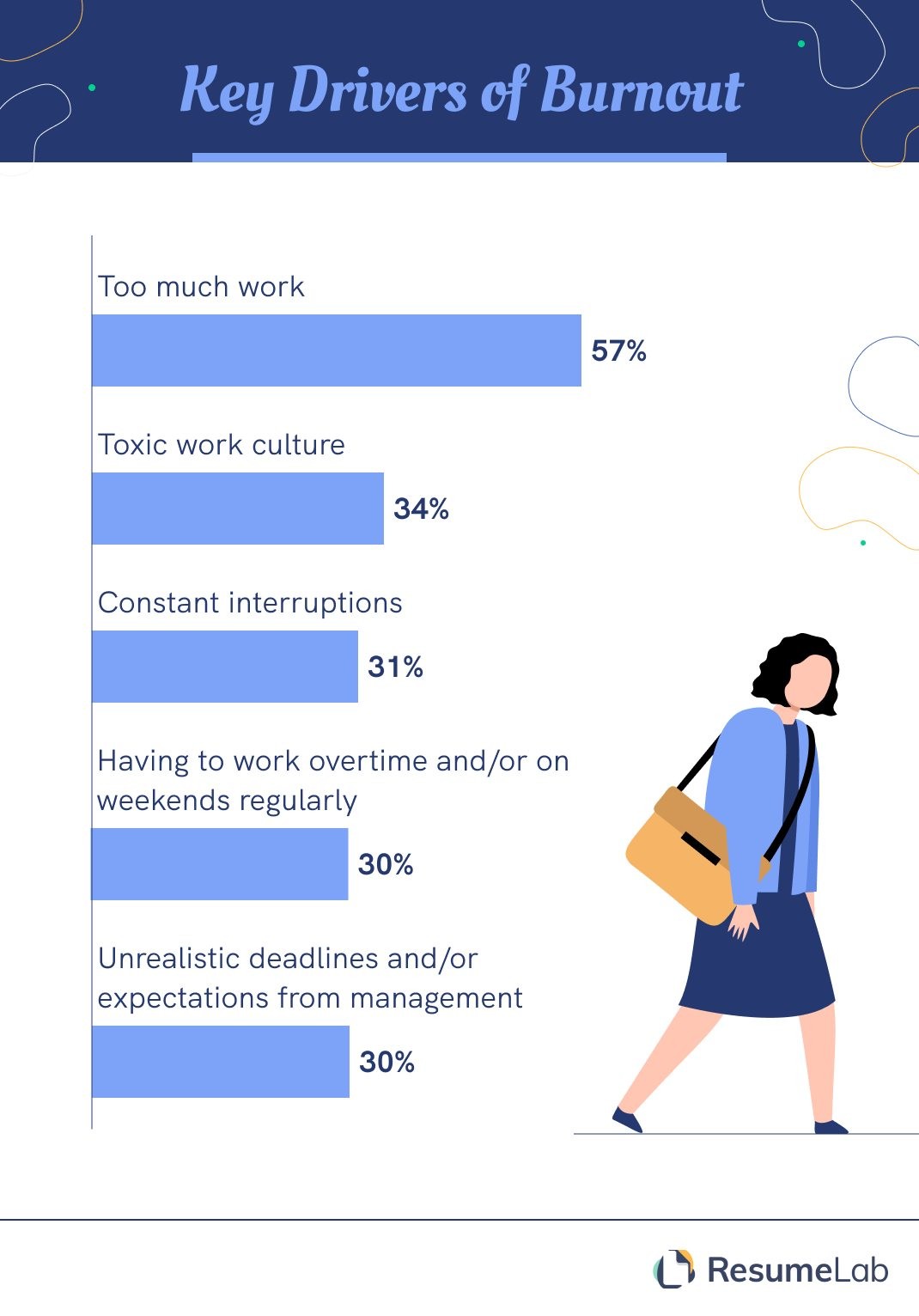
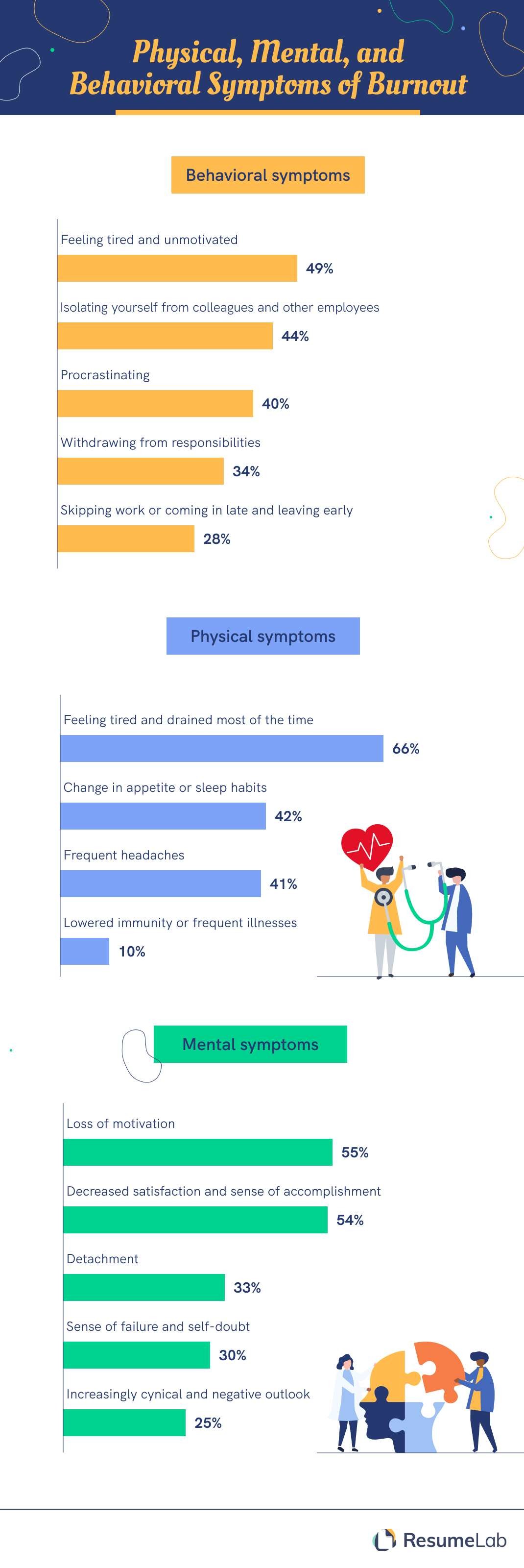
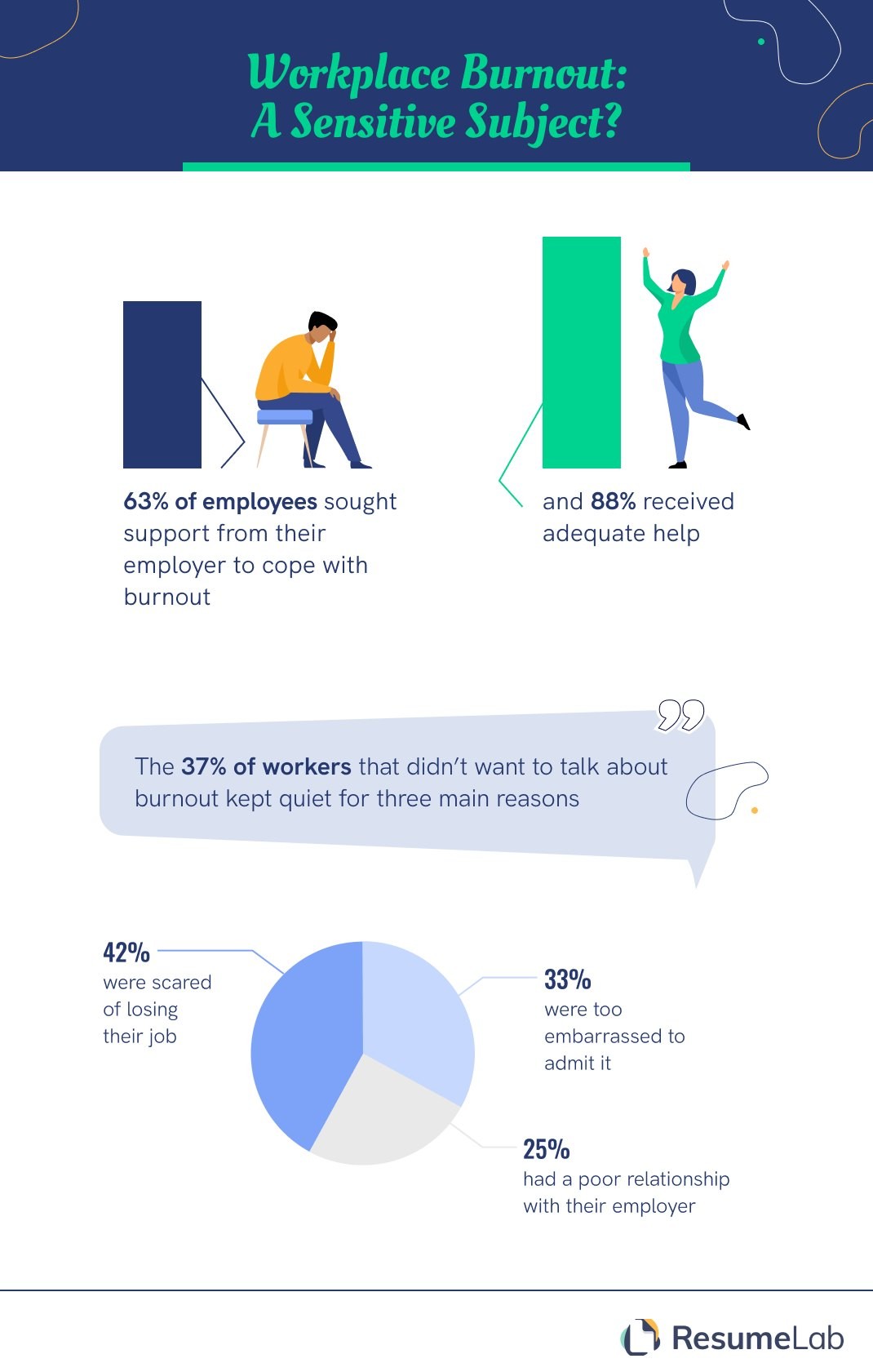
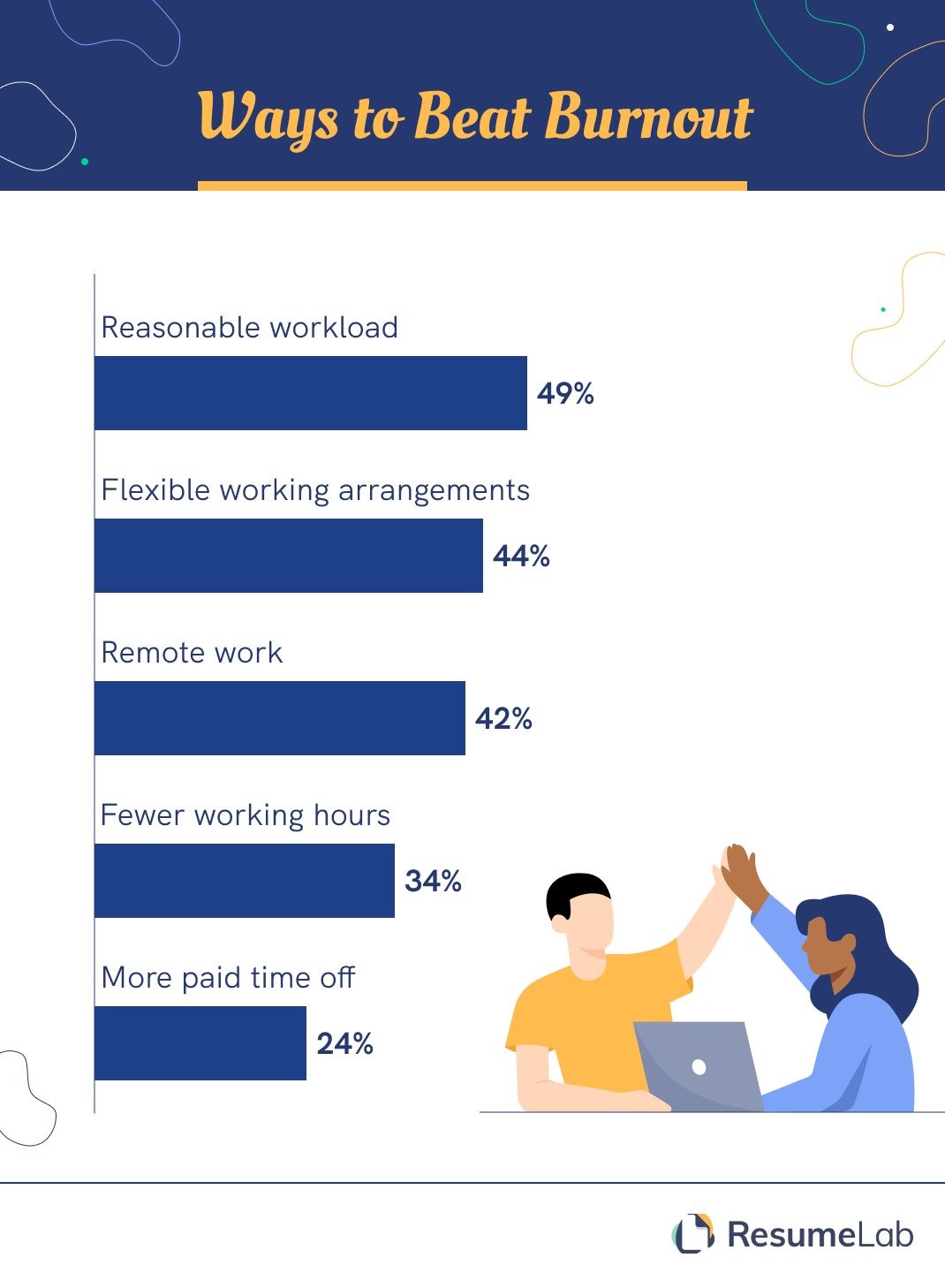
![Working for Free for Friends and Family [2021 Study]](https://cdn-images.resumelab.com/pages/work_without_pay_rlus_7.jpg)
![Are We Facing a Global Career Crisis? [2021 Study]](https://cdn-images.resumelab.com/pages/career_crisis_resumelab_6.jpg)